In This Article
The smartphones feature Infinity-V displays
 Samsung Galaxy M10 and Galaxy M20 come with Infinity-V displays, which basically mean that the smartphones have a waterdrop-shaped notch on top of their screens. While Samsung Galaxy M10 sports a 6.2-inch HD+ TFT display, Galaxy M20 features a 6.3-inch full HD+ display.
Samsung Galaxy M10 and Galaxy M20 come with Infinity-V displays, which basically mean that the smartphones have a waterdrop-shaped notch on top of their screens. While Samsung Galaxy M10 sports a 6.2-inch HD+ TFT display, Galaxy M20 features a 6.3-inch full HD+ display.
They come with face unlock feature
 To add an extra layer of security, Samsung has added the face unlock feature in its new smartphones. While Samsung Galaxy M10 only comes with a face unlock, Galaxy M20 has a fingerprint sensor, as well as a face unlock feature.
To add an extra layer of security, Samsung has added the face unlock feature in its new smartphones. While Samsung Galaxy M10 only comes with a face unlock, Galaxy M20 has a fingerprint sensor, as well as a face unlock feature.
Are available in two storage variants
 Both the smartphones are available in two storage variants in India. While Samsung Galaxy M20’s base model comes with 3GB of RAM and 32GB of onboard storage, its high-end variant has 4GB RAM and 64GB internal storage. Speaking of Samsung Galaxy M10, it is available in a 2GB RAM/16GB storage model and a 3GB RAM/32GB storage variant.
Both the smartphones are available in two storage variants in India. While Samsung Galaxy M20’s base model comes with 3GB of RAM and 32GB of onboard storage, its high-end variant has 4GB RAM and 64GB internal storage. Speaking of Samsung Galaxy M10, it is available in a 2GB RAM/16GB storage model and a 3GB RAM/32GB storage variant.
Powered by Samsung’s processors
 The South Korean technology giant has used its own processors in the smartphones. While Samsung Galaxy M10 is powered by Exynos 7870 processor, Galaxy M20 houses an octa-core Exynos 7904 processor.
The South Korean technology giant has used its own processors in the smartphones. While Samsung Galaxy M10 is powered by Exynos 7870 processor, Galaxy M20 houses an octa-core Exynos 7904 processor.
Have identical rear cameras
 Samsung Galaxy M20 and Galaxy M10 come with dual camera setups on their back panels. Both the devices feature 13MP+5MP dual rear cameras. It is worth noticing that the 5MP lens has an ultra-wide sensor. The camera app of the smartphones has support for Live Bokeh mode and come with AR stickers.
Samsung Galaxy M20 and Galaxy M10 come with dual camera setups on their back panels. Both the devices feature 13MP+5MP dual rear cameras. It is worth noticing that the 5MP lens has an ultra-wide sensor. The camera app of the smartphones has support for Live Bokeh mode and come with AR stickers.
But the selfie cameras are different
 However, the selfie cameras of the devices are different. While Samsung Galaxy M20 comes with an 8MP selfie camera, Galaxy M10 has a 5MP front-facing snapper. We should mention that you can also enable the Live Focus mode while clicking selfies with the smartphones.
However, the selfie cameras of the devices are different. While Samsung Galaxy M20 comes with an 8MP selfie camera, Galaxy M10 has a 5MP front-facing snapper. We should mention that you can also enable the Live Focus mode while clicking selfies with the smartphones.
House ‘massive’ batteries
 Samsung has touted its Galaxy M series smartphones to pack ‘massive’ batteries. The bigger sibling houses a 5,000mAh battery, and Galaxy M10 packs a 3,400mAh battery.
Samsung has touted its Galaxy M series smartphones to pack ‘massive’ batteries. The bigger sibling houses a 5,000mAh battery, and Galaxy M10 packs a 3,400mAh battery.
Run Android 8.1 Oreo
 Both the smartphones run on Android 8.1 Ore skinned with Samsung’s Experience UI. However, it has been reported that they will be getting an update to Android Pie in August.
Both the smartphones run on Android 8.1 Ore skinned with Samsung’s Experience UI. However, it has been reported that they will be getting an update to Android Pie in August.
Made in India smartphones
 We should mention that Samsung has first launched the Galaxy M10 and Galaxy M20 smartphone in India. Furthermore, the company also said that the devices have been made at its facility in Noida which is also the biggest smartphone-factory in the world.
We should mention that Samsung has first launched the Galaxy M10 and Galaxy M20 smartphone in India. Furthermore, the company also said that the devices have been made at its facility in Noida which is also the biggest smartphone-factory in the world.
Priced in the budget segment
 The base model of Samsung Galaxy M10 is priced at Rs 7,990 and its high-end version costs Rs 8,990. On the other hand, the 3GB RAM model of Samsung Galaxy M20 costs Rs 10,990 and its 4GB RAM variant is priced at Rs 12,990. Both the smartphones will be available via Amazon India’s website and Samsung’s online store starting February 5.
For the latest gadget and tech news, and gadget reviews, follow us on Twitter, Facebook and Instagram. For newest tech & gadget videos subscribe to our YouTube Channel.
[td_smart_list_end]
The base model of Samsung Galaxy M10 is priced at Rs 7,990 and its high-end version costs Rs 8,990. On the other hand, the 3GB RAM model of Samsung Galaxy M20 costs Rs 10,990 and its 4GB RAM variant is priced at Rs 12,990. Both the smartphones will be available via Amazon India’s website and Samsung’s online store starting February 5.
For the latest gadget and tech news, and gadget reviews, follow us on Twitter, Facebook and Instagram. For newest tech & gadget videos subscribe to our YouTube Channel.
[td_smart_list_end] 


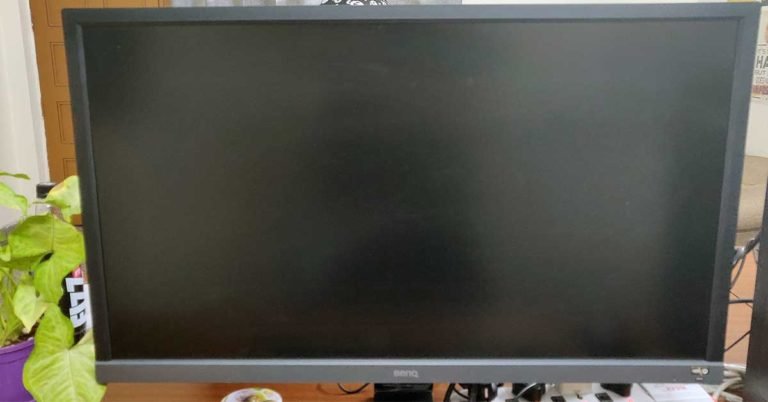
 Performance
When it comes to performance the BenQ EL2870U gaming
Performance
When it comes to performance the BenQ EL2870U gaming 

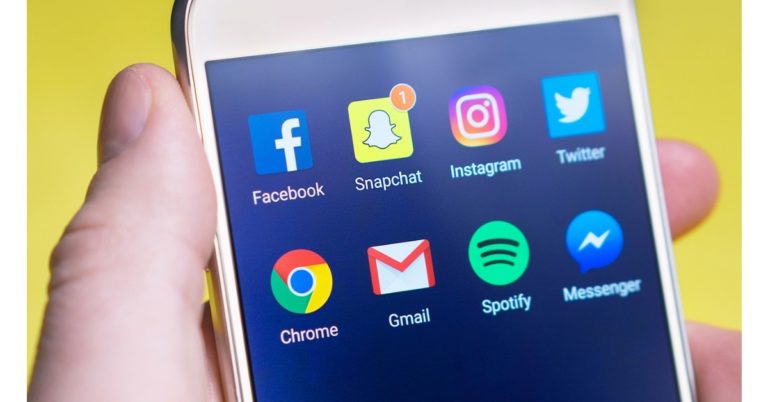

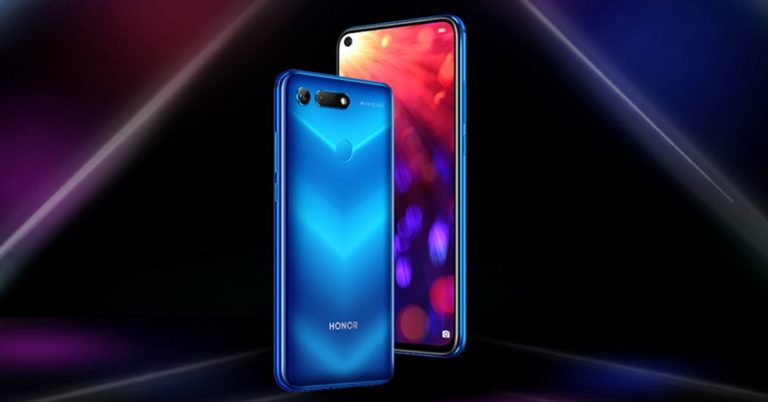




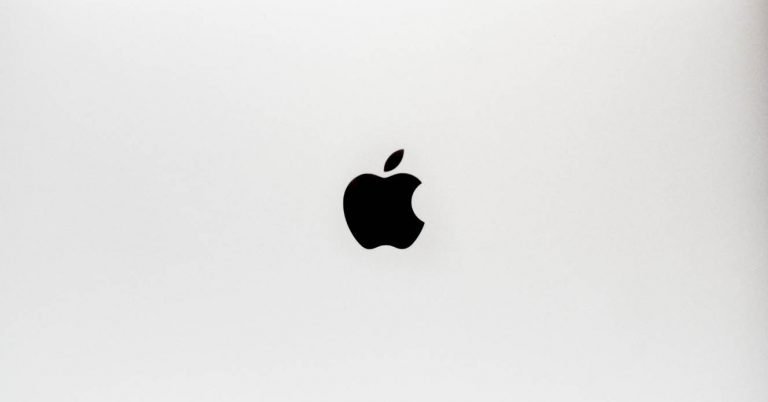


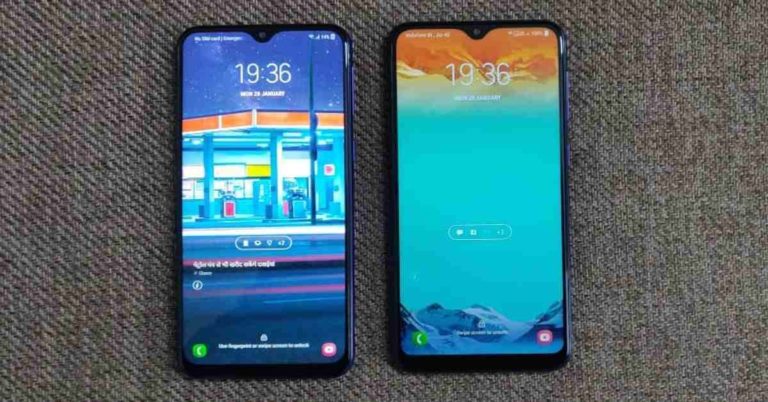
 But then, Samsung has compensated with a face unlock feature instead, so we can’t really complain. The back panel of the Samsung Galaxy M10 also has the dual rear camera setup, the LED flash, the Samsung branding, and the speaker of the device. The right edge of the handset has the power and volume rocker buttons and the left one has the SIM tray. While the bottom edge of the device has the microUSB port, the 3.5mm headphone jack and the microphone, the top edge of Galaxy M10 has the secondary microphone. Samsung has kept the look and feel of the Galaxy M10 smartphone very minimalistic. And we really liked it.
But then, Samsung has compensated with a face unlock feature instead, so we can’t really complain. The back panel of the Samsung Galaxy M10 also has the dual rear camera setup, the LED flash, the Samsung branding, and the speaker of the device. The right edge of the handset has the power and volume rocker buttons and the left one has the SIM tray. While the bottom edge of the device has the microUSB port, the 3.5mm headphone jack and the microphone, the top edge of Galaxy M10 has the secondary microphone. Samsung has kept the look and feel of the Galaxy M10 smartphone very minimalistic. And we really liked it.
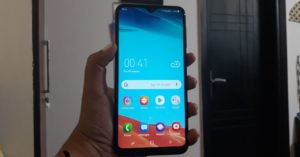 You may occasionally feel that the colour tone of the display is slightly cooler than what it is on other devices, but we didn’t really mind it. We actually feel that for the price range, the display is extremely good. In fact, we haven’t used any other recently launched
You may occasionally feel that the colour tone of the display is slightly cooler than what it is on other devices, but we didn’t really mind it. We actually feel that for the price range, the display is extremely good. In fact, we haven’t used any other recently launched  The camera app of the smartphone comes with support for Bokeh or the Live Focus mode, Beauty, Panorama and Pro modes. It also comes with AR stickers and can take continuous shots. Stickers and Live Focus mode can also be used while clicking selfies. With adequate lights, the images taken by the dual rear camera of the smartphone turned out to be quite clear and sharp. They had accurate colours and did not pixelate when we zoomed in. However, we will have to use the smartphone for a few more days before we can talk about other aspects of the camera.
The camera app of the smartphone comes with support for Bokeh or the Live Focus mode, Beauty, Panorama and Pro modes. It also comes with AR stickers and can take continuous shots. Stickers and Live Focus mode can also be used while clicking selfies. With adequate lights, the images taken by the dual rear camera of the smartphone turned out to be quite clear and sharp. They had accurate colours and did not pixelate when we zoomed in. However, we will have to use the smartphone for a few more days before we can talk about other aspects of the camera.

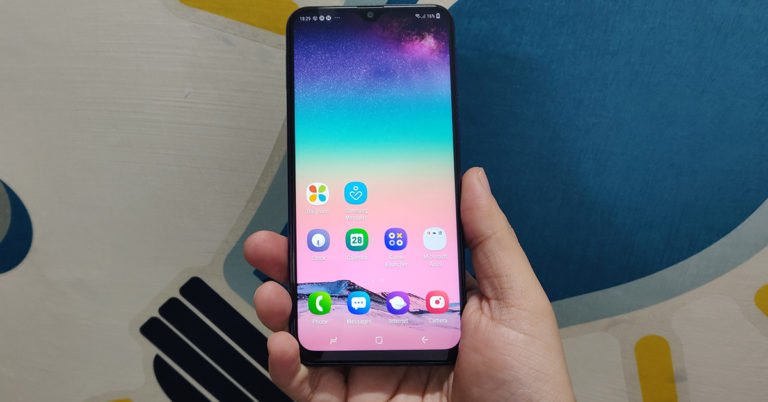
 The 13-megapixel primary camera at the back has an aperture size of 1.9 and the secondary 5-megapixel sensor there has an aperture size of 2.2. The front 8MP sensor has an aperture size of 2.0. These are great for photos and we will show some of the shots the rear one can take in just about a second. Videos can be recorded in Full HD and not 4k, on both the front and rear cams. Maybe in the next software update that will be available too. We found the cameras to take crisp pictures with very close to life colours. Our initial tests do suggest that this smartphone can very well be the king in the budget segment when it comes to smart photography.
Samsung Galaxy M20 Operating System
This smartphone has
The 13-megapixel primary camera at the back has an aperture size of 1.9 and the secondary 5-megapixel sensor there has an aperture size of 2.2. The front 8MP sensor has an aperture size of 2.0. These are great for photos and we will show some of the shots the rear one can take in just about a second. Videos can be recorded in Full HD and not 4k, on both the front and rear cams. Maybe in the next software update that will be available too. We found the cameras to take crisp pictures with very close to life colours. Our initial tests do suggest that this smartphone can very well be the king in the budget segment when it comes to smart photography.
Samsung Galaxy M20 Operating System
This smartphone has 
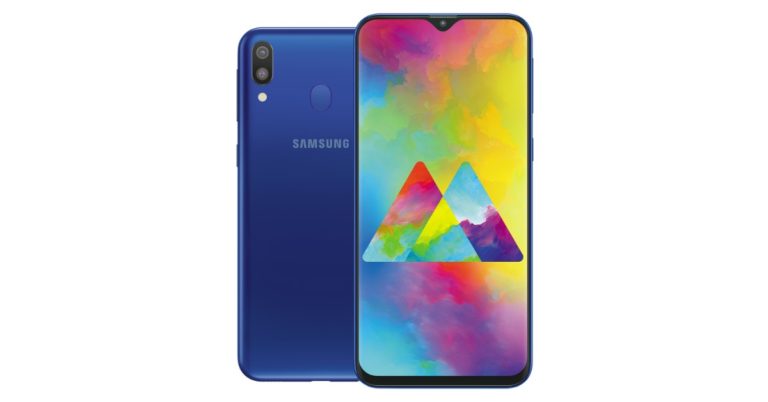

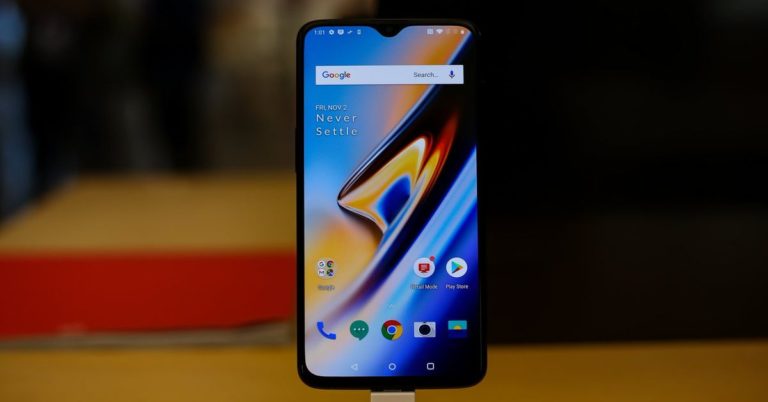
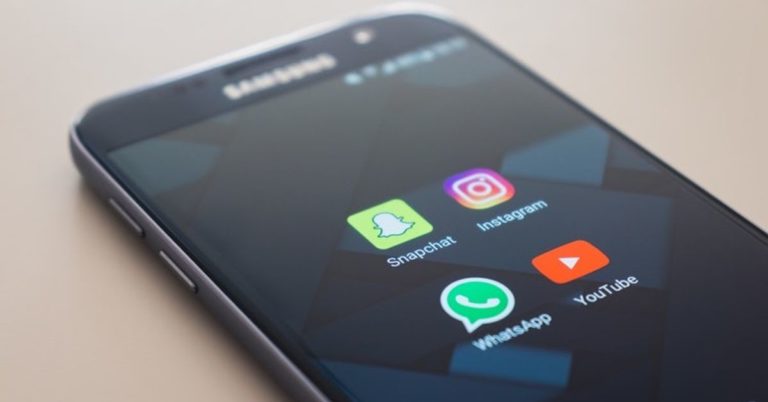

 This is probably the most awaited trend this year. A number of technology companies have announced that they will be rolling out their 5G enabled devices this year. These include the likes of Samsung, OnePlus, Motorola, Xiaomi among others. Considering that Qualcomm’s latest processor –
This is probably the most awaited trend this year. A number of technology companies have announced that they will be rolling out their 5G enabled devices this year. These include the likes of Samsung, OnePlus, Motorola, Xiaomi among others. Considering that Qualcomm’s latest processor –  Foldable phones are definitely one among the most anticipated technology trends this year. Samsung was the first one to showcase its
Foldable phones are definitely one among the most anticipated technology trends this year. Samsung was the first one to showcase its  Let’s face it: There are hardly any popular smartphones that come with just one primary camera. Till now,
Let’s face it: There are hardly any popular smartphones that come with just one primary camera. Till now,  Physical fingerprint sensors are slowly becoming a thing of past. More and more smartphones now incorporate in-display fingerprint scanners. If reports are correct, 10% of Samsung Galaxy S10+’s display will act as a fingerprint sensor. So if you place your fingerprint anywhere on it, the device will unlock. However, before Samsung could make a statement with its upcoming smartphone, Vivo announced its
Physical fingerprint sensors are slowly becoming a thing of past. More and more smartphones now incorporate in-display fingerprint scanners. If reports are correct, 10% of Samsung Galaxy S10+’s display will act as a fingerprint sensor. So if you place your fingerprint anywhere on it, the device will unlock. However, before Samsung could make a statement with its upcoming smartphone, Vivo announced its  Last year, we saw a few smartphones from Samsung,
Last year, we saw a few smartphones from Samsung,  Charging on smartphones has become way faster than it was earlier. Various smartphone makers like Oppo, OnePlus, Huawei and even Meizu offer a very high speed when it comes to charging devices. This year, we expect
Charging on smartphones has become way faster than it was earlier. Various smartphone makers like Oppo, OnePlus, Huawei and even Meizu offer a very high speed when it comes to charging devices. This year, we expect  Fingerprint sensors and facial unlocks have become a very regular feature on smartphones. So, the obvious next step is to enable payments with biometric scans. They will not only be easier to do but also far more secure than current payment models.
Fingerprint sensors and facial unlocks have become a very regular feature on smartphones. So, the obvious next step is to enable payments with biometric scans. They will not only be easier to do but also far more secure than current payment models.

 Wearables are also expected to become smarter this year. For instance, we expect to see shoes that will be able to track steps and clothes that will be able to count calories. Such wearables have the potential of becoming extremely popular in the fitness and health industry.
Wearables are also expected to become smarter this year. For instance, we expect to see shoes that will be able to track steps and clothes that will be able to count calories. Such wearables have the potential of becoming extremely popular in the fitness and health industry.




